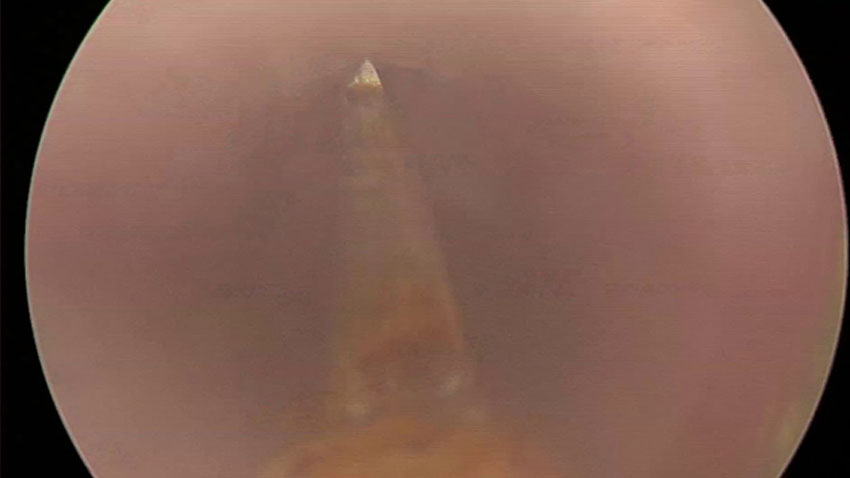The purpose of optical internal urethrotomy is to remove tissues in the urethra for smooth drainage of urine. Unlike, a laser treatment, optical internal urethrotomy uses an endoscopic device to make an incision in the urethra for creating strictures. One should avoid lifting heavy objects, driving car and other strenuous activities for weeks after the surgery.
Overview
Optical Internal Urethrotomy is a minimally invasive procedure done by urologists that involves the incision of the urethra for removal of strictures. Direct visual internal Urethrotomy is also called Optical Urethrotomy, which is done in men and it uses an endoscope device and a knife to make incisions in the urethra.
The risks associated with Optical Internal Urethrotomy include infections in the urinary tract, recurrence of urethral stricture, infections in the operation site, wound dehiscence and excessive bleeding.
The reasons for optical urethrotomy strictures in the urethra include:
- History of old injury in the urethra
- History of other infections (urethritis) and gonorrhoea in the urethra
- History of prior urethral surgery
It should be noted that strictures may develop along the full length of the urethra. The success of optical internal urethrotomy depends upon two things- the location of the stricture and whether it is the first Internal Optical Urethrotomy. The procedure is performed on an outpatient basis, which means that the patient is discharged on the same day. Before the treatment of Optical Internal Urethrotomy, there are a few preparations to be taken:
Before the Treatment
- Fix appointments with your urology doctor since you may have to undergo thorough physical examination, blood and urine tests, etc. Talk to your doctor about the effects of anaesthesia and the associated risks.
- Consult with your doctor regarding the types of medications you are already on and whether you have any health concerns. If you are taking anti-inflammatory drugs or aspirins, inform it to your doctor right away.
- Consult with your doctor about any blood thinners you are taking. Patients are mostly recommended to stop taking these medicines that can interfere with your surgery and lead to excessive blood loss.
- Take a shower on the night before the procedure.
- Do make arrangements for returning home after the surgery.
- Stop eating or drinking anything for at least eight hours before the surgery.
- If your doctor recommends any medications on the day of the surgery, take them with a small sip of water.
How it is performed
The operation of internal optical urethrotomy takes about 30 minutes.
- Once you are ready for the surgery, you are taken into the operation theatre. You are given general or spinal anaesthesia, whichever your urologist feels is right for you.
- General anaesthesia lets you sleep through the procedure, while, spinal anaesthesia numbs the surgical site but keeps you conscious, which means you won’t feel any pain. You are administered anaesthesia through an intravenous line through a catheter in your body.
- Doctors make an incision in the abdomen and insert a special tube, called cystoscope through your skin inside into the urethra.
- Your surgeons use the scope to find strictures in the urethra. The procedure helps the doctors evaluate the boundaries of urethrotomy.
- A special type of knife is inserted through the cystoscope to cut off the scar tissues inside the urethra to help widen its space for allowing smooth passing of urine.
- It should be noted that if it is a laser surgery, then laser rays are used to cut off scarring tissues blocking the ureter.
- After the tissues are removed with a knife, doctors explore the urethra further and the bladder too.
Recovery
You are discharged on the same day after a few hours of the operation. Anaesthesia will help you not feel the pain, but after its effects wear off, you are given pain relief medications.
Immediately after the surgery, you are taken to the recovery room where you will stay as long as the effects of anaesthesia wear off and you feel better. You will allowed to eat and move in order to let your urology doctor check if you are feeling fine. A catheter is placed in the urethra that will help drain out urine into a separate pouch.
The pain after the surgery may stay for two weeks. You are advised to avoid any strenuous activities and avoid heavy lifting. Drink plenty of water, avoid having sex and do not drive during the recovery period. You can ensure faster recovery of optical radical urethrotomy by listening to your doctor’s instructions. In case, you observe any signs or symptoms of fever, severe pain in the pelvic area, difficulty in urinating, lots of blood in the urine, then inform it to your doctor without any delay.






Leave A Comment
You must be logged in to post a comment.